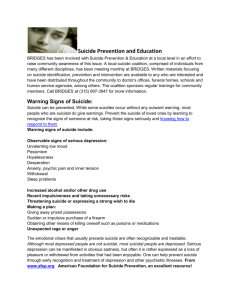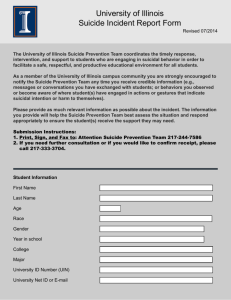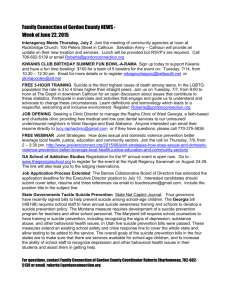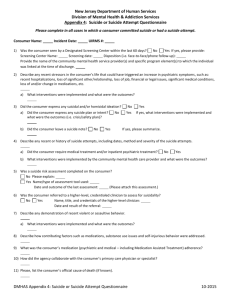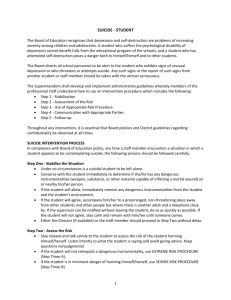National Brain Bank: Essential for suicide prevention
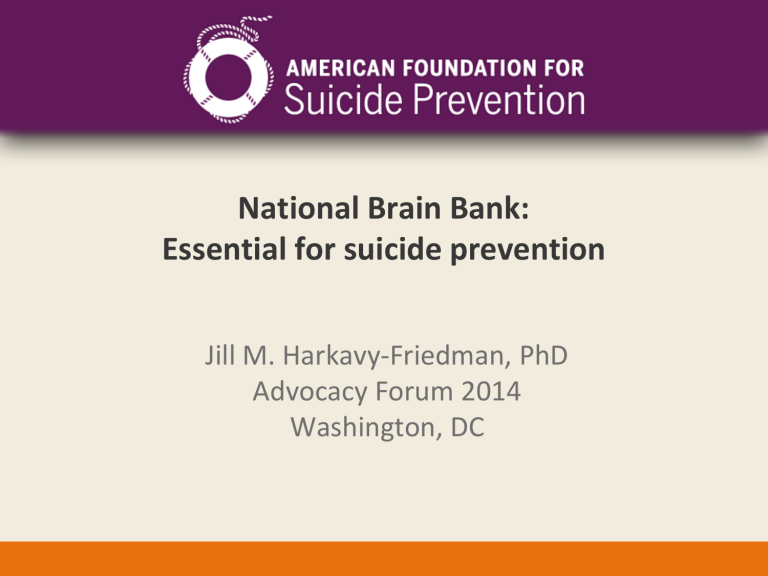
National Brain Bank:
Essential for suicide prevention
Jill M. Harkavy-Friedman, PhD
Advocacy Forum 2014
Washington, DC
Learning from the brain
Suicide is related to brain structure and function
Specific parts of the brain relate to suicide
Brain chemicals relate to suicidal behavior
Gene expression in the brain is different for those who die by suicide
Suicidal people make decisions differently
Medications that affect brain chemicals can reduce suicide
AFSP & Brain function
Victoria Arango 1990-present (Columbia University)
Post-mortem brain studies showed:
Serotonin, a neurotransmitter associated with depression and impulsivity, was decreased in the frontal cortex, the part of the brain that controls and manages our decision making.
People with depression who died by suicide had more, rather than fewer, serotonin neurons in the dorsal raphe nucleus
Genetics of the brain
Gustavo Turecki 2000’s(SRG; McGill Univeristy)
Post-mortem brain studies showed:
In the frontal cortex, the gene TrkB-T1 presents at lower rates in those who died by suicide than in others.
The frontal cortex is involved in the organization and inhibition of behavior, and lowered functioning has been found to relate to rigid thinking and impulsiveness.
Brain in action
Jeff Bridge (YIG; Ohio State University)
Demonstrated that rigid thinking, impulsive behavior and poor decision-making was elevated in adolescents who had made suicide attempts.
Hillary Blumberg (SRG; Yale University)
Decrease in frontal white matter integrity in adolescents with depression who made suicide attempts.
Anthony Ruocco (YIG; U of Toronto Scarborough)
Testing the effect of DBT on brain function
A National Brain Bank
Strength in numbers
Standardization
Accessibility
Longevity
Innovation
A National Brain bank can save lives
Learn more about AFSP research at www.afsp.org




